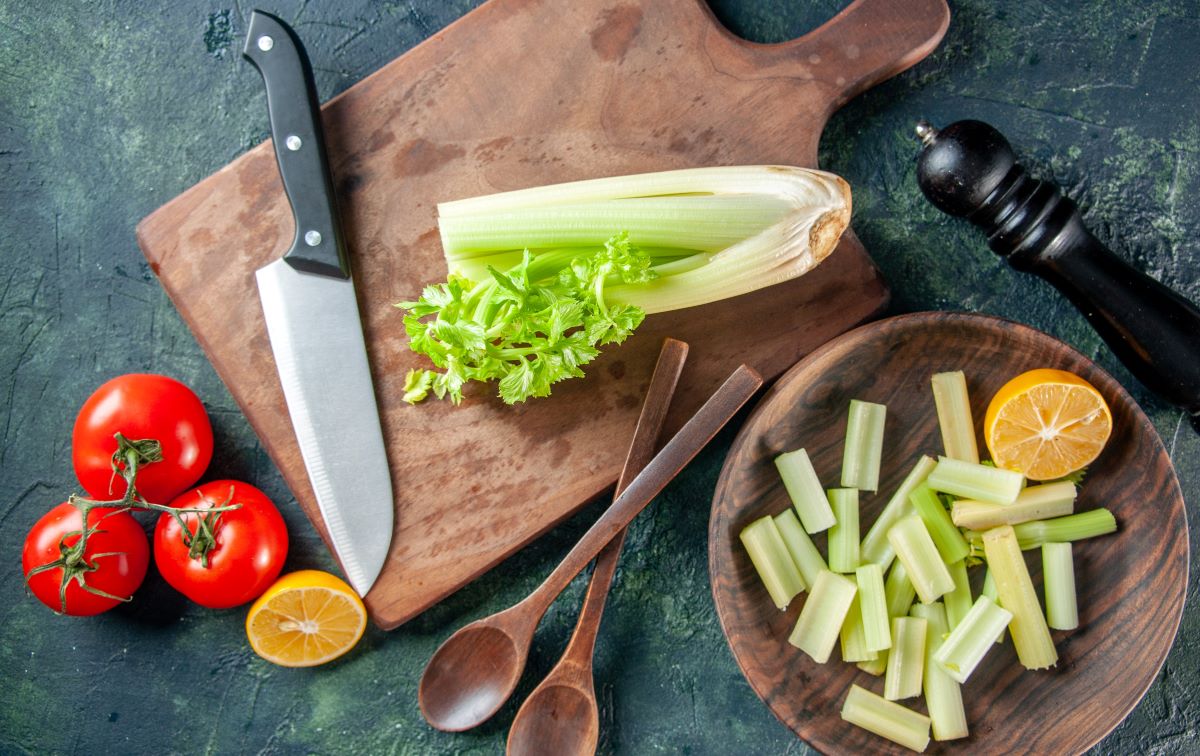The Best Knife for Cutting Vegetables
Mar 06,2023 | Fzkaly
When it comes to preparing vegetables, have you ever struggled with a knife that just won't seem to cut through the tough outer layers of squash or the delicate skin of a tomato? Are you tired of bruising and mashing your veggies instead of slicing them cleanly and precisely? To help you figure out which knife works best for cutting vegetables, we picked the 5 best knife types for the job.
1. Chef's Knife

The chef's knife is a versatile kitchen tool that can handle a wide range of tasks, including chopping vegetables. This knife features a broad, curved blade that tapers to a point, allowing you to rock it back and forth on the cutting board to chop and slice with ease.
Chef's knives typically range in size from 6 to 12 inches, with the most popular size being around 8 inches. A longer blade can be useful for larger vegetables, while a shorter blade may be more suitable for smaller vegetables or for cooks with smaller hands.
When selecting a chef's knife, it is important to choose a high-quality blade material. Look for high-carbon stainless steel blades, which are durable and resist staining and rusting. A good quality chef's knife can be a bit expensive, but it is worth investing in a high-quality knife that will last for years with proper care.
2. Santoku Knife

The Santoku knife is a Japanese-style knife that is similar to the chef's knife but has a few key differences. The blade is shorter and wider than a traditional chef's knife, with a flatter edge and a rounded tip. This design allows for a more horizontal slicing motion, rather than the rocking motion used with a chef's knife.
Santoku knives are especially well-suited for slicing vegetables, as they provide excellent control and precision. The flat edge of the blade is also ideal for slicing through foods with a straight downward motion, which can be useful for tasks like julienning vegetables or slicing herbs.
Like chef's knives, santoku knives are available in a range of sizes, typically ranging from 5 to 7 inches. They are also available in both Western-style and Japanese-style handles, so it is important to choose one that feels comfortable in your hand.
3. Paring Knife

While chef's knives and santoku knives are useful for a wide range of tasks, sometimes a smaller knife is necessary for more precise work. This is where the paring knife comes in. This knife typically features a narrow, pointed blade that is ideal for peeling and trimming vegetables.
Paring knives are available in a range of sizes, but most are between 3 and 4 inches in length. They are especially useful for tasks like peeling potatoes and carrots, trimming the ends off green beans, or removing the seeds from peppers.
When selecting a paring knife, it is important to choose one with a sharp blade and a comfortable handle. The handle should be easy to grip and the knife should feel well-balanced in your hand.
4. Nakiri Knife

The nakiri knife is a Japanese-style vegetable knife that is designed specifically for slicing and chopping vegetables. This knife features a straight blade with a squared-off tip, which allows for a more efficient cutting motion.
The nakiri knife is especially well-suited for tasks like chopping onions, slicing cabbage, and cutting through dense vegetables like squash and sweet potatoes. The straight blade makes it easy to make precise cuts, while the squared-off tip allows you to easily scoop up chopped vegetables.
The thickness of the blade is an important consideration when choosing a Nakiri knife. A thicker blade is more durable and can handle tougher vegetables, but it can also be more difficult to control. A thinner blade, on the other hand, is more precise and easier to control, but it may be more prone to chipping or bending.
5. Utility Knife

Utility knives are typically smaller than chef's knives, which makes them easier to maneuver and control when cutting vegetables. They are also lighter in weight, making them less tiring to use over longer periods of time.
Utility knives are designed to be sharp and precise, which is important when cutting vegetables. A sharp blade will make clean cuts through vegetables without crushing them, which can result in better texture and flavor.
The small size and flexibility of a utility knife make it ideal for intricate cutting tasks, such as peeling and slicing small vegetables like garlic or shallots. It is also useful for trimming and cutting larger vegetables like broccoli or cauliflower.

The best knife for cutting vegetables will depend on your personal preference and the specific task at hand. A good quality chef's knife or Santoku knife is a good all-around choice, but having a paring knife, utility knife, or nakiri knife on hand can also be helpful for certain tasks.



